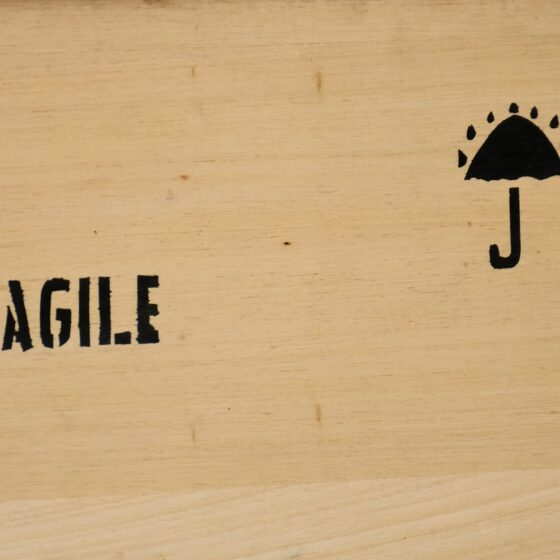Considering getting a pet? Already have one? Here are some of the most impressive and exciting pet ownership statistics to see where you stand. Whether furry, slimy, feathery, or scaly, animals have always intrigued us. They’re our companions, our friends, and our support, but let’s put it all into numbers and see what they show.
From the two most popular pets on the planet to the exotics that have always been so mysterious, our team has found the most impressive stats.
The Top 10 Pet Ownership Stats to Get You Started
- A dog or cat owner can spend upwards of $235 on average a year for pet food in the US.
- 67% of households in the US have a pet.
- The coronavirus crisis has led to thousands of animals being left to die as people were evacuated in Wuhan.
- A cat owner can spend up to $160 for regular vet visits in a year.
- There were 47.1 million households with cats as pets in the United States in 2018.
- In 2018, the cat population in Europe was 103.8 million.
- 2.43 million pets were insured in North America in 2018.
- 60.2 million households in the US have dogs.
- There were $796.8 million paid out in liability claims related to injuries from dogs and dog bites in 2019.
- About one in five wild animal species is traded as pets or products.
General Pet Ownership Statistics
Here’s some general knowledge around pet ownership that you should keep in mind.
1. A dog or cat owner can spend upwards of $235 on average a year for pet food in the US.
(Bookly)
And this is just the tip of the iceberg.
The cost of pet ownership, regardless of the pet you’ve chosen to keep you company, will require not only money but time and attention as well.
2. The latest pet owners’ statistics reveal that 67% of households in the US have a pet.
(APPA)
According to the American Pet Products Association’s National Pet Owners Survey for 2019–2020, this is an estimated 84.9 million households in the US. Sadly, the numbers following knowledgeable and responsible pet ownership aren’t quite as high.
3. The coronavirus crisis has led to thousands of animals being left to die as people were evacuated in Wuhan.
(CNN)
Another sad fact is that aggression toward pets is rampant as a result of the virus. Many are thrown to the streets, while others are being killed on sight. As the virus spreads globally, this tendency will sadly spread.
4. The pet ownership statistics by state show that 63% of rentals in New York allow pets.
(2nd Address)
Although a home that you own is the most secure option if you have pets, it’s good to know that more landlords are starting to come around to allowing tenants with pets. As per a recent survey, 47% of landlords offer furnished pet-friendly rentals. 61% of Seattle landlords allow pets, while in Chicago, 54% of properties are pet-friendly.
5. There are 11.5 million households that have freshwater fish as per the pet ownership statistics for 2020.
(APPA)
This makes them the third most popular pet in the United States. On the other hand, saltwater fish can be found in only 1.6 million US households. Of course, cats and dogs continue to be the favored pets. Keep reading to find out which is more popular.
6. According to the pet owner demographics, millennials have the most pets.
(PetFoodIndustry)
Across the board, in all animal types, millennials take first place in animal ownership. They particularly lead in saltwater fish, small animals, and bird ownership. If you’re also a bird lover, you may get a cute bird feeder and enjoy joyous chirping on your balcony.
7. One of the funniest pet ownership laws by state is that you can’t have a smelly dog in one Illinois town.
(Paw Culture)
This is a law in the town of Galesburg, where the law covers not only dogs but also fowl and poultry. Fortunately, in a recent statement, the Galesburg Police Chief shared that this isn’t a law that they enforce, though they do get chicken complaints from time to time. However, to keep your home smelling nice, giving your pup a bath from time to time could save you a lot of trouble.
Cat Ownership Statistics
Are you a cat owner? Find out some interesting facts and stats about owning a cat.
8. A cat owner can spend up to $160 for regular vet visits in a year.
(Bookly)
Owning a cat can add up—even just their everyday costs. Aside from food and litter, you can spend, on average, $30 on toys, $43 at the groomer, and $58 for treats, and if you travel, another $120 for boarding yearly. However, those numbers could be considerably less or more depending on your cat’s breed, health, and age.
9. The facts about pet ownership reveal that there were 47.1 million households with cats as pets in the United States in 2018.
(Animal Sheltering)
Cats are the second most popular pet per household in the United States, falling short by 13.1 million after dogs. This does not in any way reflect how many cats are in the US, though.
Even though fewer households in the US have cats, more of them have multiple cats, according to the pet owner statistics. There were 94.2 million cats as pets in the US, putting them as the pet with the highest number after freshwater fish. Cleaning the house must be a mission with multiple cats!
10. There are an estimated 30 to 40 million community cats in the United States.
(Humane Society)
These are the abandoned, stray, and feral cats that depend on our help to survive. Unfortunately, only 2% of them are spayed/neutered, resulting in 80% of all new kittens being born to them.
11. According to the pet ownership statistics by city, Corvallis, Oregon, is the best city for cat owners.
(Trupanion)
This city may not have the most available cat-friendly housing for sale (just 16%), but it offers the most cat-friendly services. Second in line is Spokane, Washington, with Orlando, Florida, in third.
12. 47% of Romanian households have at least one cat, making the country number one in the EU for cat ownership.
(Statista)
The pet ownership statistics by country reveal that they are quite a bit ahead of Latvia, which showed 38% of households with cats. In third place comes Hungary at 34%, followed by Slovenia and Portugal with 33% each.
13. In 2018, the cat population in Europe was 103.8 million.
(Statista)
It has been gradually increasing since 2010 when there were just 85 million cats. There was a significant jump of nearly 10 million between 2012 and 2013 and a slight drop between 2016 and 2017.
14. Pet ownership statistics worldwide show that in the UK, more than £1.1 billion was spent on cat food in 2019.
(Statista)
And if that doesn’t seem like a lot, nearly £1.4 billion was spent on dog food. People love their pets and want only the best for them. Of course, this is just a small portion of total pet spending—there are plenty more things pet owners spend money on. There may be many perks, but the amount of money spent is undoubtedly not one of the benefits of pet ownership.
Dog Ownership Statistics
Do you have a pet dog? Find out some intriguing facts and stats about owning a dog in this section.
15. 2.43 million pets were insured in North America in 2018.
(NAPHIA)
Of this number, dogs represented 88.9% and totaled $1.26 billion. The average yearly premium for accident and illness dog insurance for 2018 was $566.34, further adding to the cost of pet ownership. On the other hand, for accident-only insurance, it was $190.02, with the dog statistics revealing that the average age of an insured dog was 4.58 years old.
16. 60.2 million households in the US have dogs.
(Animal Sheltering)
According to pet industry statistics, dogs are the most common pet in American homes. However, they don’t beat cats in total numbers as more people have multiple cats in their homes. In fact, there are 4.5 million fewer dogs as pets in the US than there are cats.
17. Again comparing dog owners vs. cat owners, statistics reveal there was an average of 1.49 dogs per US home in 2018.
(Animal Sheltering)
This perfectly explains the difference in the total number of dogs vs. cats. On average, there are 2 cats per US household, although we can all agree that we know plenty of homes with many more than that. Either way, the average for both cats and dogs changes every year.
18. The latest millennial pet ownership statistics show that 80% of the age group own dogs.
(PetFoodIndustry)
This year, the survey also included Gen Z, who also stepped it up and had the same rate of dog ownership. Furthermore, the study revealed that both generations prefer dogs, with just 50% or less owning cats.
19. Large dog breeds can keep burglars at bay.
(Protect Your Home)
Several studies and interviews that were done with burglars reveal that dogs, especially large breeds, can help stop a home invasion. Most burglars are ready to call off their plans if they hear a large dog barking on the other side of the door.
20. Unfortunately, pet ownership statistics in the United States reveal that there were $796.8 million paid out in liability claims related to injuries from dogs and dog bites in 2019.
(iii, All Pet’s Life)
Dogs bite about 4.7 million people in the US every year. Therefore, having proper home insurance is crucial when you own a dog, especially an aggressive one. On the bright side, dog bite claims had dropped nationwide to 17,297 in 2018. Renters and homeowners insurance covers dog bites and injury claims within the liability limits, which are usually between $100,000 and $300,000.
21. Fun news for pet owners, statistics in the US show that the pet tech market will grow to more than $20 billion by 2025.
(PR Newswire)
In 2018 in North America, the pet tech market accounted for 55% of the pet industry share. As more people are adopting smart products in their homes and more apps for pet owners are developed, the industry grows. From 2018 to 2025, the tech market for pets is expected to grow by 25%, according to estimates by a Global Market Insights report from 2019.
Exotic Pet Ownership Statistics
Do you have what is considered an “exotic pet”? Here, we’ll be exploring some interesting information on these types of pets.
22. There could be between 5,000 and 10,000 tigers in captivity in the US.
(National Geographic)
Unfortunately, it’s impossible to precisely know their numbers, as there are no national pet ownership laws specifically covering tigers. While some state laws ban the private ownership of tigers, some only require the private owner to have a permit, while others have no laws at all. Further research shows that it’s easier to buy a tiger than adopt a cat from a shelter in some states.
23. There are no exact US pet ownership statistics on pet foxes.
(PetHelpful)
Just like with tigers, there are no real statistics on the number of foxes kept in the US as pets. Keeping domestic foxes as pets are generally illegal in most states—or they can’t be kept privately. Having imported foxes, however, varies in legality from state to state. Some require a license, while others don’t have any laws regarding these exotic animals.
24. Exotic pet ownership statistics in Australia reveal that there are an estimated 4.8 million pet birds in the country.
(Animal Medicine Australia)
Although there are harsh laws on exotic pet ownership in Australia, birds are a popular type of pet to have, with just under 20% of households having at least one pet bird. Fish, another animal type that can be considered exotic, have the highest population in Australia at 10.7 million.
25. Among the more depressing exotic animal and pet statistics, about one in five wild animal species is traded as pets or products.
(News Week)
Very rarely are wild animals bred in captivity and sold, or if they are, the parents of these creatures were most likely captured in the wild. Anyone considering an exotic animal as a pet needs to understand that the animals are caught in the wild and are contributing to putting the species at risk.
The Bottom Line
Before getting a pet, make sure you’re ready to take on the responsibilities that come with it, regardless if it’s a popular pet such as a cat or dog, or an exotic animal. Remember that having a pet means more than just expenses, too. A pet requires attention and love, but when it comes to your home, you may need to make some changes.
The previous pet ownership statistics leading up to 2022 should be revealing enough to show you not only the costs but which pets are preferred worldwide. Whether a cat, dog, fish, bird, or exotic animal, think carefully before getting a pet as it will rely on you for the rest of its life.
FAQ
What percentage of the US population owns a dog?
The latest statistics show that 60.2% of households in the United States have at least one dog. They are the most popular pet per household. However, the total number of pet cats is higher compared to dogs because it’s more common for households to have multiple cats.
(Animal Sheltering)
Are there more cat owners or dog owners?
There are more dog owners than cat owners overall. However, there are more pet cats in the United States than there are pet dogs—as the average is 2 cats per household vs. nearly 1.5 dogs per household.
(Animal Sheltering)
Which country has the most dog owners?
Because many countries don’t require pet registration, it’s difficult to say precisely what country has the most dog owners. However, according to the latest statistics, the US has the most dogs. On the other hand, Argentina has the most pets per inhabitant, and 80% of Argentinians have pets. These numbers, however, are without China in the running, as there are no pet ownership statistics from the country because dogs aren’t registered.
(My Animals)
Sources:
- 2nd Address
- All Pet’s Life
- American Pet Products Association
- Animal Medicine Australia
- Animal Sheltering
- Bookly
- CNN
- Humane Society
- iii
- My Animals
- National Geographic
- News Week
- North American Pet Health Insurance Association
- PR Newswire
- Paw Culture
- PetFoodIndustry.com
- PetHelpful
- Protect Your Home
- Statista
- Statista
- Statista
- Trupanion













